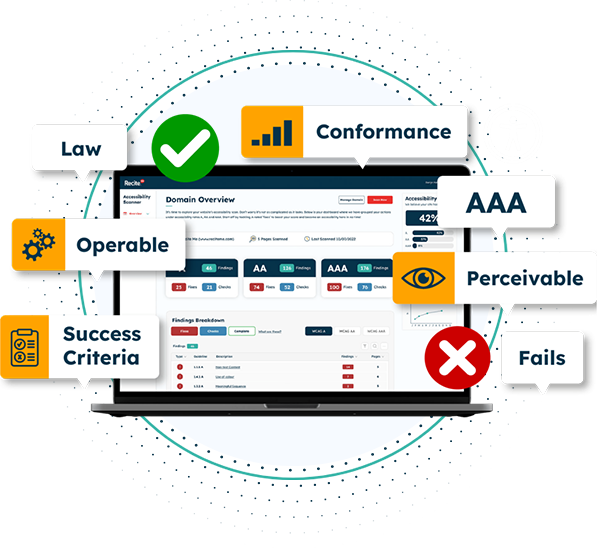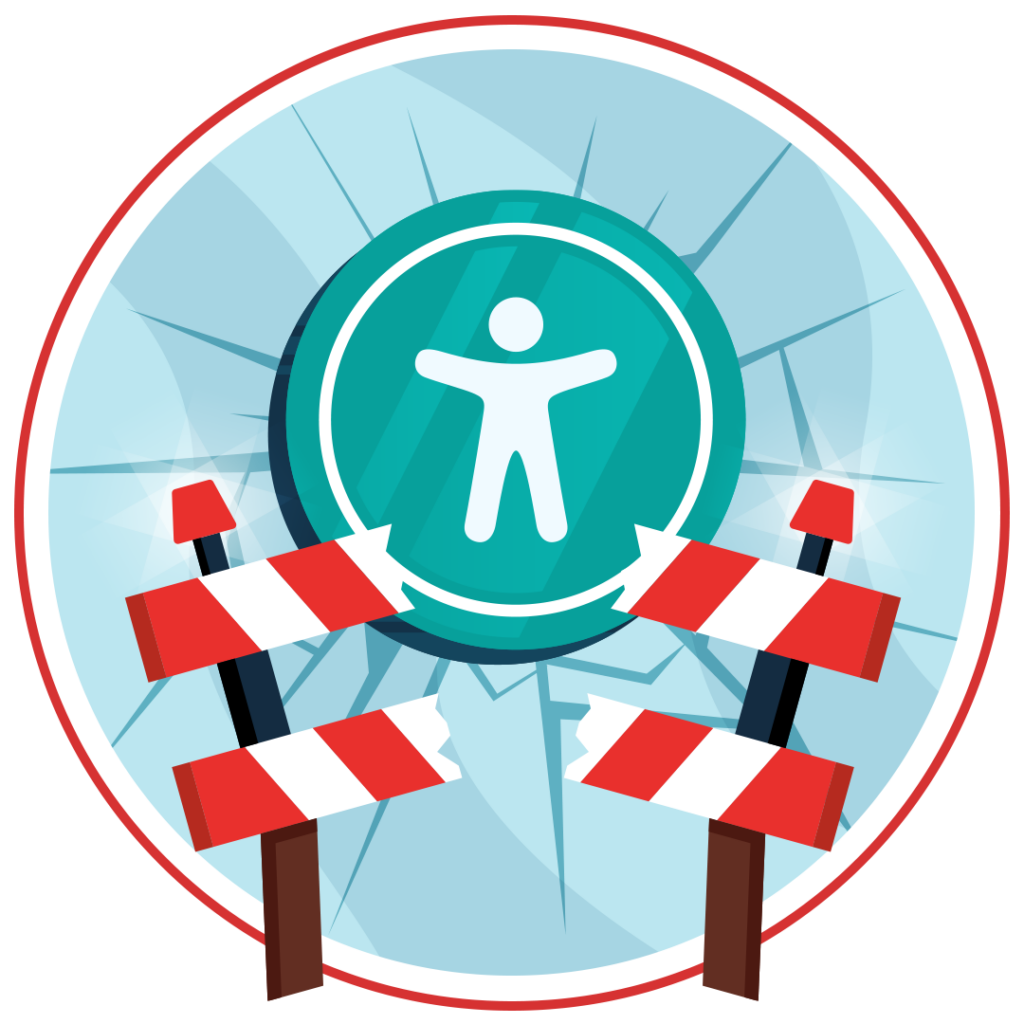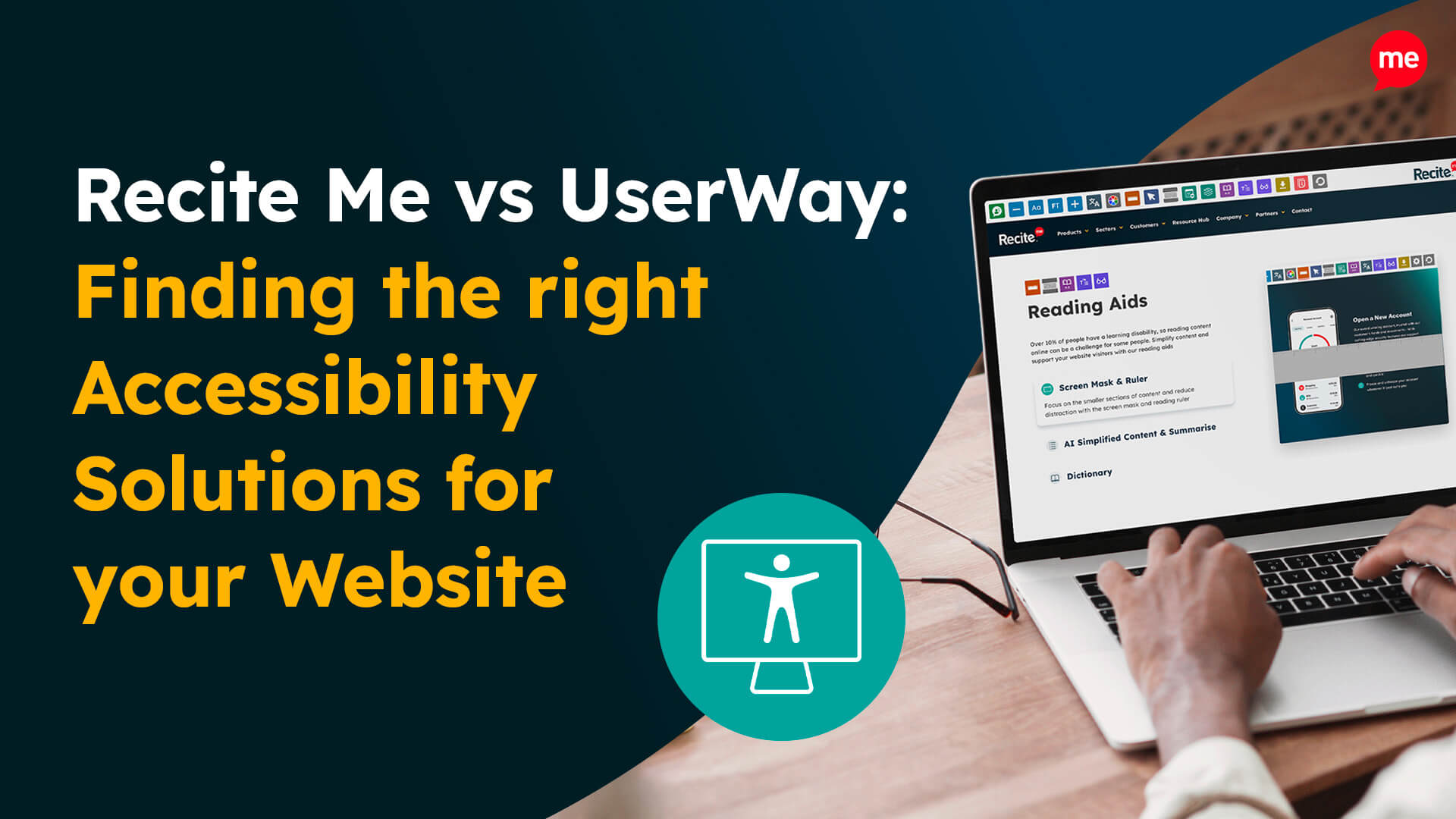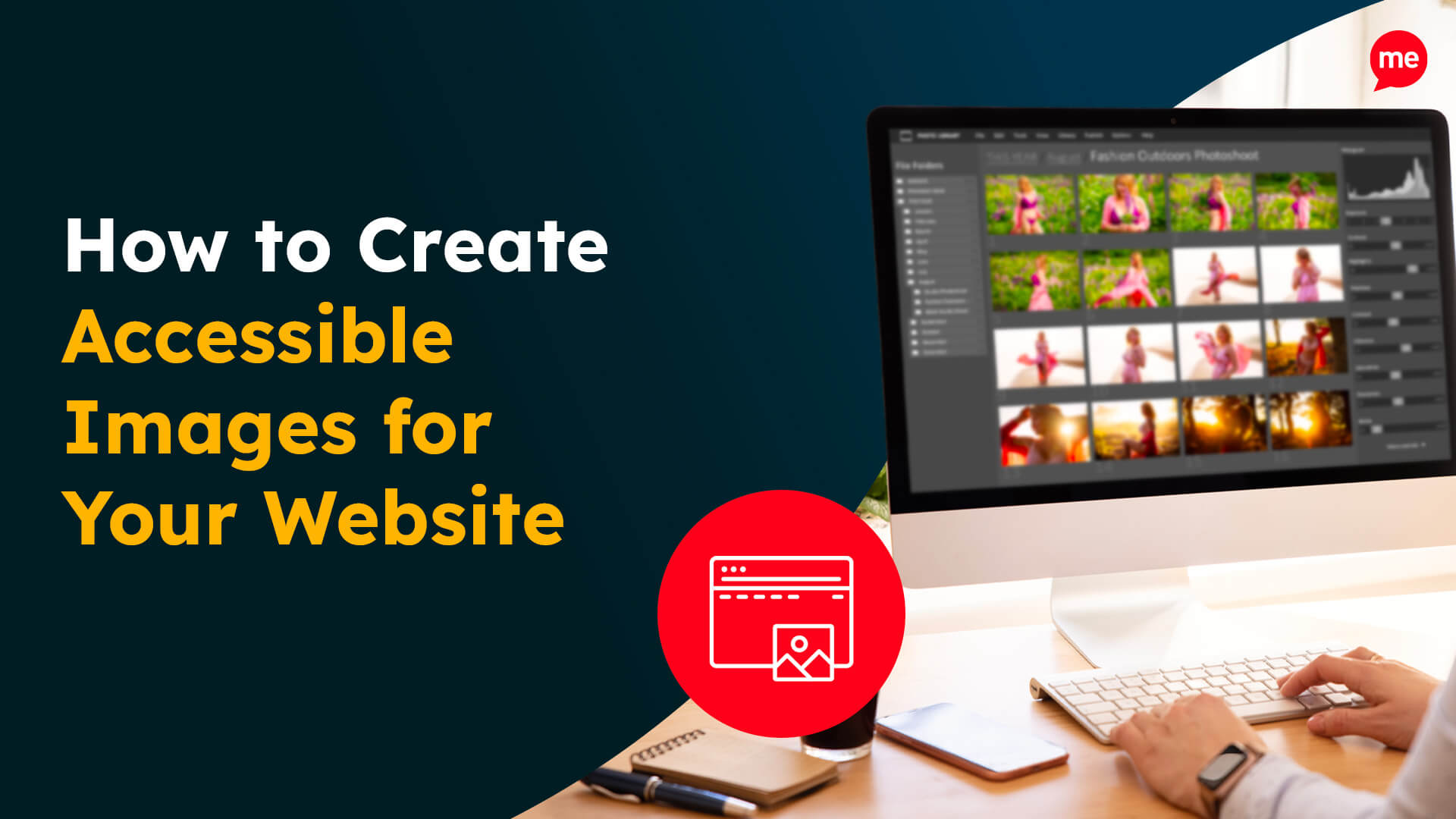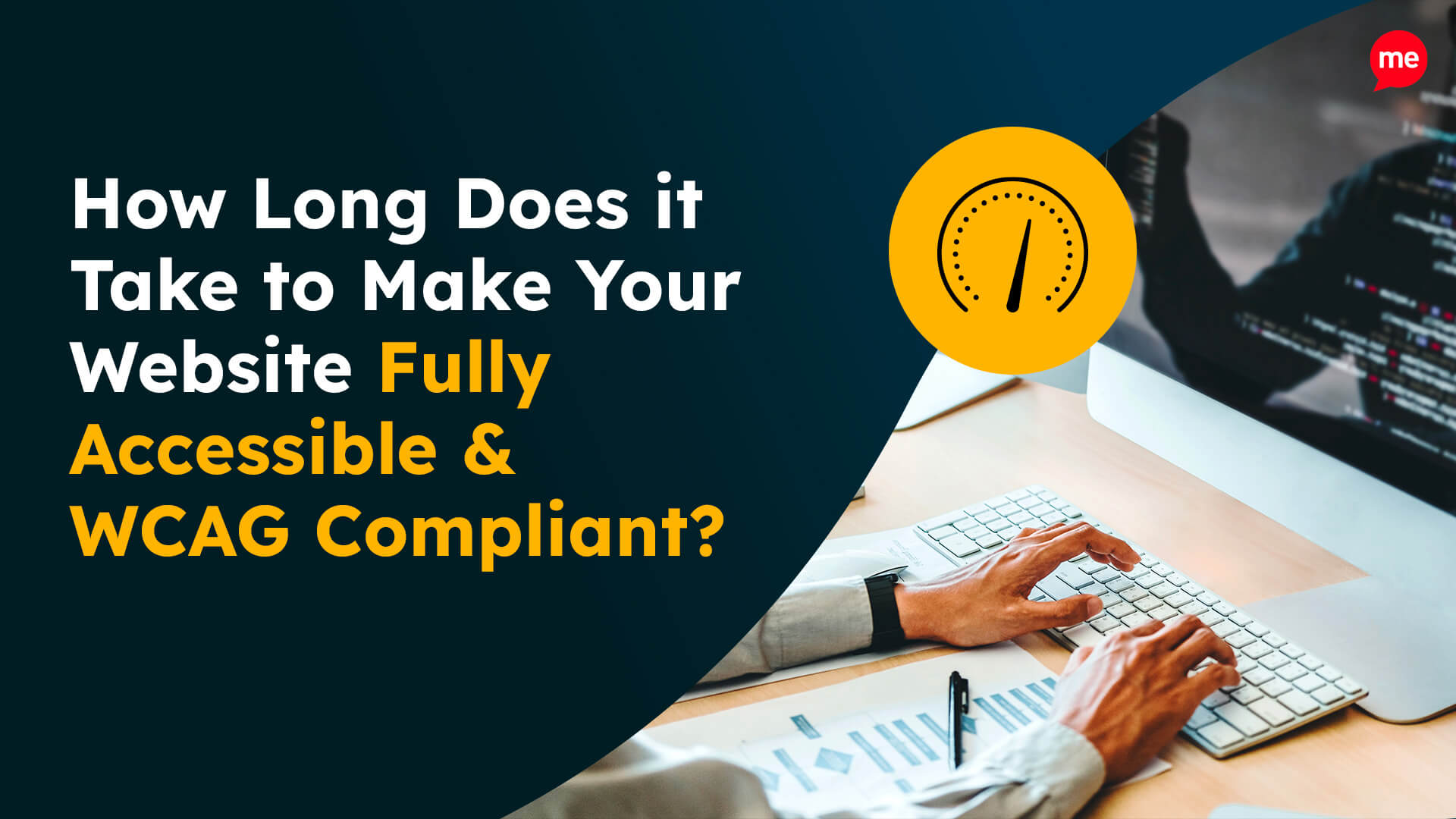Get Your Free Accessibility & Inclusion Toolkit
Download NowIn today’s interconnected world, where communities are as diverse as ever, the need for inclusive environments is essential. Inclusion is what ensures that marginalised groups, once welcomed into communities, have the tools they need to thrive. Despite this, barriers to inclusion continue to hinder true equality, often without us realising. This article places these barriers under the spotlight, offering actionable insights to overcome them so that we can pave the way towards a more inclusive future.
What are Barriers to Inclusion?
If inclusion is about giving people the tools they need to be able to participate fully in various aspects of society, like education, employment, sport, etc., then barriers to inclusion are the physical, psychological, and social factors that prevent us from doing this.
Barriers to inclusion, such as unconscious bias, stifle attempts at creating inclusive environments and are often rooted in a lack of awareness. Few employers, for example, understand the impact of an inaccessible website or what to do about it. So, if we are to begin tearing down these barriers, we first need to be aware of them. After all, the first step to addressing any problem is to understand it fully.
Why is Inclusion Important?
Inclusion is a cornerstone of a just and equitable society. It ensures that every individual, regardless of their background, abilities, or circumstances, is given the opportunity to participate fully and reach their potential. Inclusive environments create diverse spaces where individual differences are celebrated and every voice is valued, this shows the importance for both diversity and inclusion best practices.
Here are some of the most important reasons for inclusion:
- Equal Participation and Potential: Inclusion ensures that disadvantaged individuals, regardless of their background or physical abilities, have the same opportunities to participate and reach their full potential. This creates a level playing field where everyone can thrive.
- Fundamental Human Right: Providing equal opportunities through inclusion is a basic human right. It upholds the principle that every person deserves to be treated with dignity and have access to the same opportunities.
- Diverse and Innovative Workplaces: Inclusive workplaces invite participation from a wide range of individuals, each bringing unique perspectives and ideas. This diversity fuels creativity and innovation, leading to more effective problem-solving and higher revenue generation, as seen in diverse management teams which generate 19% higher revenues.
- Enhanced Educational Environments: In classrooms, inclusion means no child is excluded due to their background or abilities. This includes providing translated materials for non-English speakers and enabling disabled students to participate in all activities, fostering a supportive and diverse learning environment.
- Attracting Talent: Inclusive environments are attractive to potential employees and help bolster your employer branding. As a recent study found 76% of job seekers believe a diverse workforce is a non-negotiable factor when considering job offers.
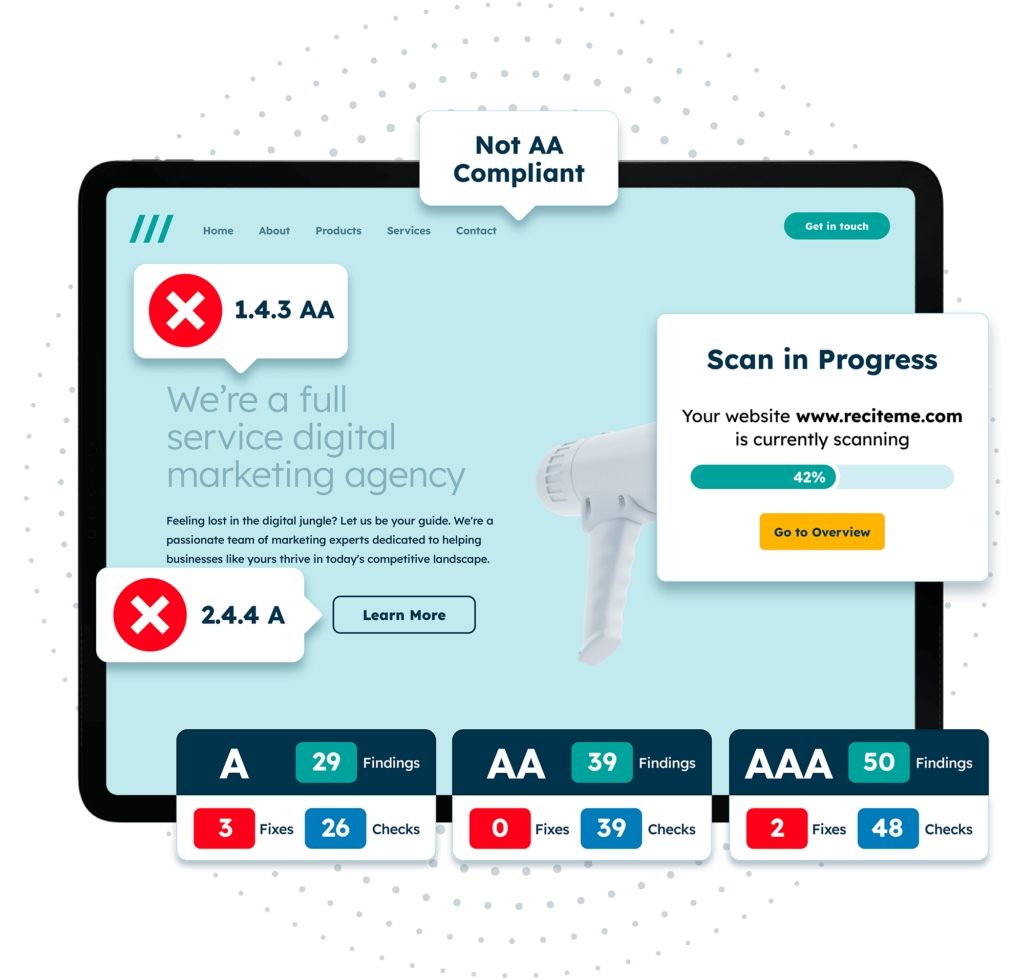
Free Accessibility Check of your Website
Finding accessibility issues is now easier than ever. Recite Me offers a free automated scan of your website’s homepage to highlight non-compliance. You’ll get recommendations on how to fix them, helping to improve your accessibility score.
What are the Barriers to Inclusion and how to Overcome them?
Barriers to inclusion can be difficult to recognise. Some, like unconscious bias, happen in the background of our psychology without us even knowing. That is why you might still be underperforming on your inclusion metrics despite doing all you can to provide an inclusive environment. This section highlights some of the most prevalent barriers to inclusion so that you’ll be better positioned to overcome them.
These biases can lead to discriminatory recruitment practices, often without the perpetrator recognising their own behaviour. To counteract it, organisations should implement inclusive recruitment and unconscious bias training programs which educate employees about the existence and impact of unconscious biases and provide strategies to mitigate them. You can start this training by checking out our inclusive recruitment checklist.
Unconscious Bias
Unconscious bias refers to the deeply ingrained beliefs and stereotypes that affect our decisions without us even realising it. For example, companies might consistently hire individuals from similar educational backgrounds, unconsciously favouring those who “fit the mould” of the existing management team, despite following D&I hiring procedures. This excludes talented candidates of different backgrounds from participating, acting as a clear barrier to inclusion.
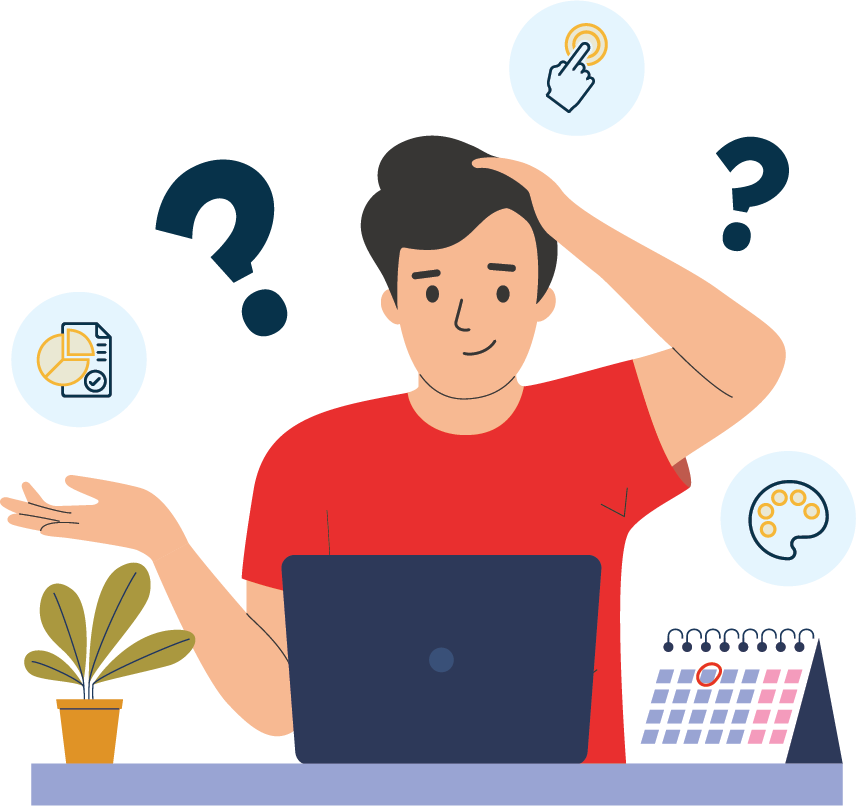
Another technique is to implement blind recruitment processes, where identifiable information, such as gender and nationality, are removed from applications. This helps to prevent unconscious biases from hijacking the decision making process, ensuring candidates are evaluated based solely on their skills and experience.
Inaccessible Online Platforms & Resources
As the digital world becomes more integral to everyday life, inaccessible online platforms and resources pose significant barriers to inclusion. Individuals with disabilities, such as visual impairments or motor limitations, may find it challenging to navigate websites that are not designed with accessibility in mind.
Universities that offer online courses without subtitled video content or screen reader compatibility, for example, exclude students with visual or hearing impairments from accessing the learning material they need to successfully complete the course; a clear barrier to inclusion.

If you are not sure how to make your website more accessible, the Web Content Accessibility Guidelines (WCAG) are a great place to start. They provide a set of standards and recommendations for making web content more accessible to people with disabilities. This includes adding alt text to images, ensuring keyboard navigability, and providing transcripts for audio content, among other things.
Adhering to WCAG is a lot easier if you have a tool. Something like Recite Me’s Accessibility Checker is able to scan your website for any non-WCAG-compliant or inaccessible features. Based on the tool’s suggestions, you can then start implementing fixes and improve your accessibility score. Regular user testing with individuals who have disabilities is another approach which can help identify and rectify accessibility issues.
Lack of Training and Awareness
Without proper training and awareness, individuals may unintentionally engage in exclusionary behaviours, such as making remarks that are insensitive to individuals of a particular culture. Such remarks only perpetuate stereotypes further, creating a hostile environment for marginalised groups, preventing them from contributing to their fullest potential, and stunting their development in the process.
Incidents like this stem from a lack of understanding. Mandatory training programs focused on diversity and inclusion should, therefore, be mandated to overcome this. These programs should cover a wide range of topics, including cultural competence, anti-discrimination laws, and inclusive practices.
To go above and beyond, you may even choose to set aside dedicated time slots where diverse groups of employees can share their experiences and learn from each other. Perhaps they could teach their peers about their own culture or exchange culturally-specific stories. Encouraging open dialogue in this way helps break down existing barriers and gives colleagues a chance to develop bonds with people they may not have otherwise had the opportunity to.
Language Barriers
Language barriers can prevent individuals from participating in conversation-based activities or interacting with information-based materials. Employees who are not fluent in the region’s dominant language may struggle to understand important communications, participate in meetings, or contribute to discussions, ultimately leading to their marginalisation.
If a concerted effort is not made to overcome language barriers as soon as they are brought to the surface, then these individuals can become despondent. This is particularly relevant in multicultural societies where communities are bustling with a variety of different languages and dialects.
The good news is, overcoming language barriers is quite straightforward. Organisations must offer multilingual resources and translation services. Providing materials in multiple languages, using simple vocabulary, and employing interpreters when necessary helps ensure that everyone can participate fully. Encouraging the learning of additional languages within the organisation, even just a few words or common phrases, can also help break down language barriers. This can be done via subsidised language courses or language school partnerships.
Failure to make Reasonable Adjustments
Reasonable adjustments refer to the accommodations an organisation makes to ensure that disabled individuals have equal access to facilities and are able to perform their duties effectively.
A company that does not provide ergonomic workstations or adaptive technologies for employees with physical disabilities is effectively excluding these individuals from performing their job duties comfortably. Failure to make reasonable adjustments for disabled individuals can severely limit their ability to participate, posing a significant barrier to inclusion.
Organisations should conduct accessibility audits to identify areas where adjustments are needed and implement these changes proactively. This might include installing ramps, providing disabled parking spaces, creating more accessible online resources or allowing flexible work arrangements. Policies should be in place to ensure that requests for reasonable adjustments are addressed promptly and effectively.
Our 40-page Digital Accessibility & Inclusion Toolkit helps businesses break down online barriers and make a real impact. It offers practical advice on all aspects of digital accessibility, from writing an accessibility statement to accessible website tips and inclusive hiring.
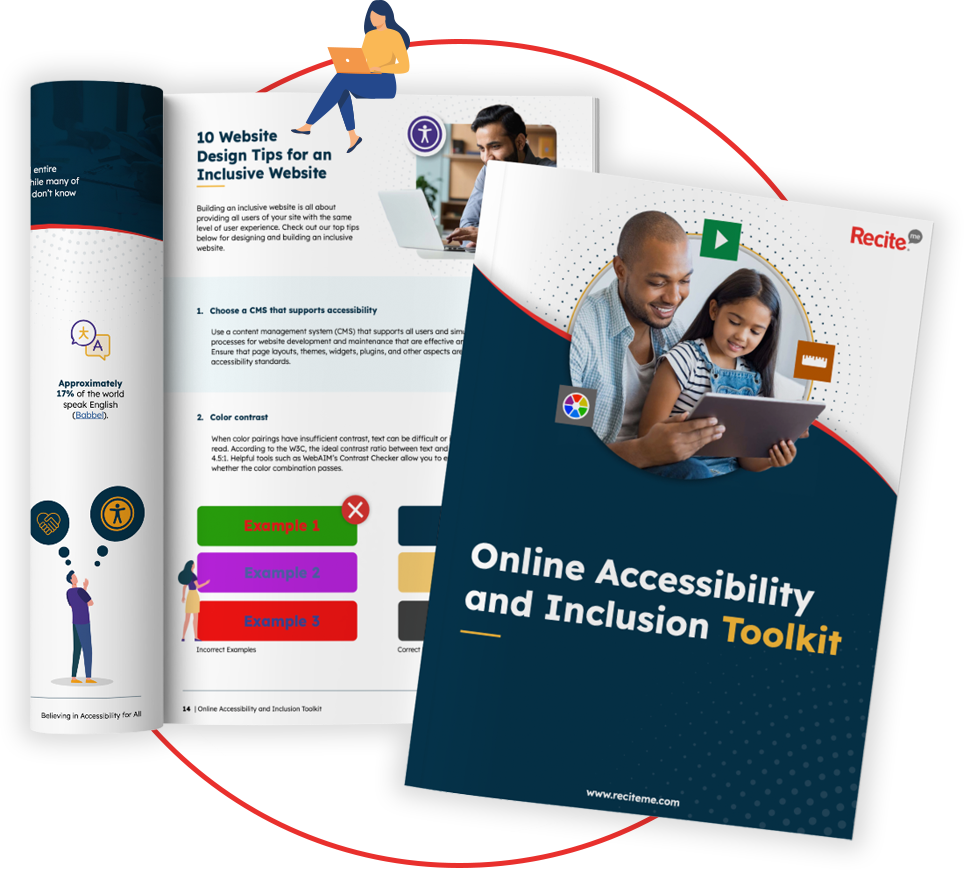
Tools to Aid your Organisations Inclusion Journey
At Recite Me, we help organisations from all around the world become more inclusive with our range of accessibility tools, aiding major brands across the world in a variety of different ways.
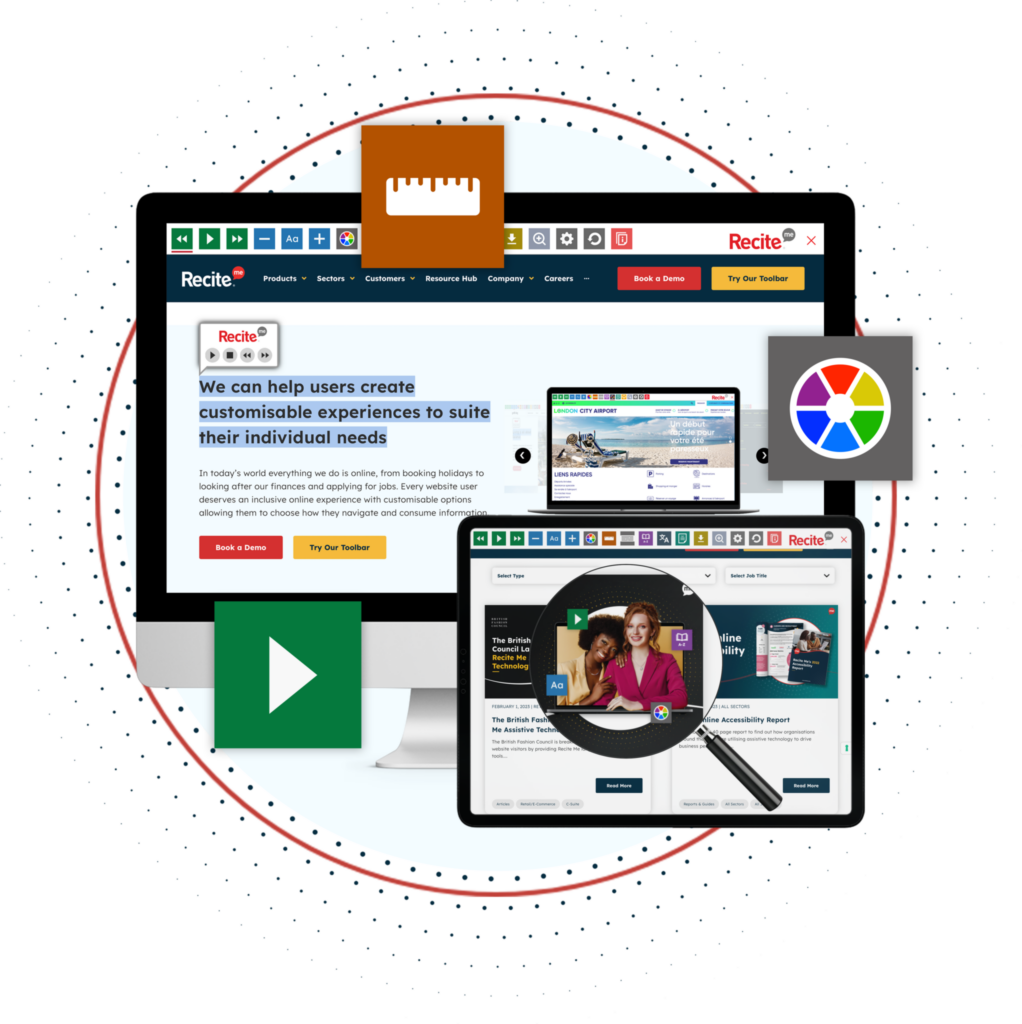
Accessibility Toolbar
Our Accessibility Toolbar is our longest standing product, it works by integrating with a wide variety of different websites. Once integrated, the toolbar can be used for a variety of different functions, mainly allowing the user to customise the website to suit their needs and preferences. Some of the Toolbars main features include:
- Personalise font size, colour and type.
- Screen Mask & Ruler tools for reading.
- Download written content as an audio file.
- Text to speech.
- Translation to over 100 languages.
- Customising PDF documents.
Accessibility Checker
Our Recite Me Accessibility Checker is a tool that website owners can use to highlight and fix inaccessible web design. The tool works by taking the URL of your website and performing a scan of the domain. The checker will then pull a report of accessibility issues into an actionable list, with suggestions and recommendations to help you resolve the issues. The step by step process of the checker is as follows:
- Step 1: Scan Your Domains
- Step 2: Identify Accessibility Issues
- Step 3: Fix Accessibility Errors
- Step 4: Track Your Progress
- Step 5: Download & Share and Accessibility Report
